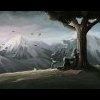Discoveries Along Lao Border Suggest Buddhism Has Been In The Region Longer Than Thought
-
Recently Browsing 0 members
- No registered users viewing this page.
-
Topics
-
-
Popular Contributors
-
-
Latest posts...
-
292
Do you know your wife/girlfriends body count?
You must do nothing 7 days a week apart from weights. -
140
Travel Chiang Mai Crowned Asia's Best City, Bangkok Shines in Third
It looks that way. Ah well. I will order some superb Indian food in honour of the Guardian's knowledgeable food critic to get over this painful episode. Did I mention that there are not one but TWO South Indian restaurants in Chiang Mai? That' s the creme de la creme. In London they make a big deal about Dosas. Here it's just another dinner. -
15
Opening bank account rules catch 22 (1-year extension)
Yup, a fair bit more costly then moving the funds through for example Wise to a Thai bank and withdrawing with local cards. Not sure though how the banks would handle the dtv, lots of stories on how non immigrant status seems to be a strict requirement and dtv is still considered a long term tourist visa... For the time now I use a Revolut card with Thai Baht account coupled to it, (much) better exchange rate but still get hit with 250 Baht atm usage fee. -
292
Do you know your wife/girlfriends body count?
To someone like you, that couldn't understand the logic behind things, yet keeps commenting for reasons I'm well aware. Go back , for the 4th time, and read what I said before atpeace commented. That's what I'm talking about here, and I think you really don't know this anyway. Quick to answer, with no idea why. -
140
Travel Chiang Mai Crowned Asia's Best City, Bangkok Shines in Third
I had a 5 day trip to Lampang late last year and to be honest, that was about 4 days and 23 hours too long. The only saving grace was that the Space Hotel wasn't too bad. It ticked a box as in:- place on the list, never to return.- 1
-

-
140
Travel Chiang Mai Crowned Asia's Best City, Bangkok Shines in Third
It was a polite way to reject you
-
-
Popular in The Pub





.thumb.jpeg.d2d19a66404642fd9ff62d6262fd153e.jpeg)








Recommended Posts
Create an account or sign in to comment
You need to be a member in order to leave a comment
Create an account
Sign up for a new account in our community. It's easy!
Register a new accountSign in
Already have an account? Sign in here.
Sign In Now